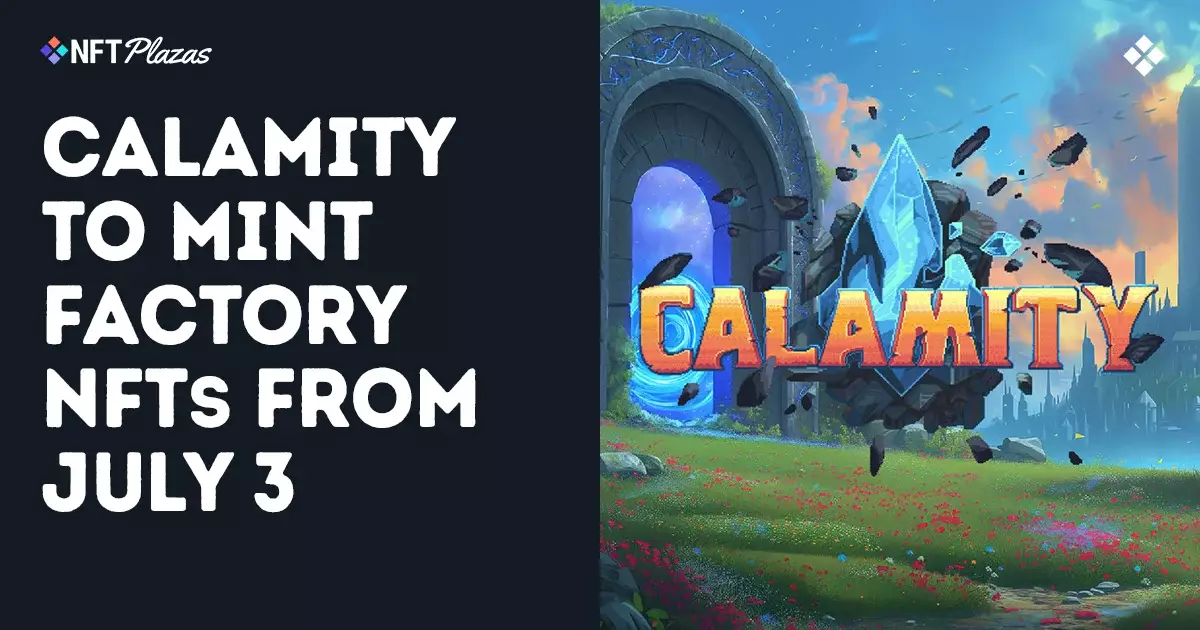Calamity’s announcement of their Factory NFTs, poised to debut July 3, is yet another example of the hype-driven allure surrounding blockchain gaming’s so-called “innovations.” Promising a “personal in-game space” and “unique mechanics,” these digital assets are framed as vital keys to their ecosystem and $WYRM token rewards. But beneath the techno-optimism lies a deeper question about actual utility versus speculative value — a tension that remains unaddressed in most NFT projects, Calamity included. Offering a virtual “land” or base of operations sounds enticing, especially in a game likened to Diablo or Lineage II, but does digitized ownership of such assets really enhance player experience or primarily serve as a monetization funnel? The optimistic PR gloss often overlooks that these benefits rarely surpass cosmetic or incremental gameplay tweaks, leaving true player empowerment a distant dream.
Play-to-Earn or Earn-to-Play? The Economic Gambit
The introduction of staking mechanisms where Factory NFTs can be “merged” to increase $WYRM rewards feeds into the broader “play-to-earn” narrative that blockchain gaming champions. On paper, it seems revolutionary — players generating value by playing. But the devil is in the detail. First, there’s the economic risk to buyers of $40 NFTs and the volatility baked into $WYRM tokens. This structure blurs the line between gaming and speculative investment, often transforming players into de facto investors. History from prior NFT projects suggests that such models tend to implode or lose steam, leaving latecomers with worthless tokens and assets. The so-called “performance-based” mechanics for Season 1 might sound player-friendly, but their true fairness and sustainability remain unproven. The merging of factories to boost staking returns suggests a system skewed towards those willing to pour in more capital—rewarding wealth over skill or time commitment.
The Unspoken Barriers to Genuine Accessibility
Calamity positions itself as a retro-inspired MMORPG with ostensibly classic gameplay layered atop blockchain innovation. However, the reality of participating fully in this ecosystem is far from straightforward. Players must navigate purchasing NFTs, staking tokens, and understanding merging tiers to access key gameplay elements like Expeditions and Automatas. This technical and financial complexity erects barriers for the average gamer, especially those wary or unfamiliar with crypto’s intricacies. Far from democratizing gaming, models like this risk erecting paywalls that favor a crypto-savvy minority. The initial sale of just 2,160 out of 9,999 Factory NFTs at $40 a pop also evokes a sense of exclusivity — contrary to the welcoming, social MMO experience that Calamity touts.
Innovating or Replicating? The Risks of Retro Inspiration
Drawing from inspirations like Diablo and Albion Online sets the bar high for Calamity’s gameplay quality. These classics earned their places through tight mechanics, rich worlds, and rewarding progression systems. Yet, Calamity’s added blockchain layer risks shoehorning gameplay into economic incentives first, player fun second. The NFT-driven land ownership, crafting mechanics, and staking rewards threaten to shift focus from immersive storytelling and emergent gameplay to asset speculation and grind optimization. Blockchain-powered MMORPGs often wrestle with this balance, and many fall short by centering their monetization over player enjoyment. Calamity’s roadmap suggests the blockchain features are integral, which might hamper agile design shifts if player feedback demands changes conflicting with the token economy.
What “Personal In-Game Space” Really Means for Players
The concept of a “personal in-game space” tied to NFTs sounds promising but is notoriously nebulous in practice. Unlike traditional land ownership in games like Albion or EVE Online, blockchain land NFTs often lack meaningful environmental integration or depth. Calamity’s Factory NFTs promise unique mechanics and crafting options, yet the impact on actual gameplay loops remains vague. The value proposition seems tangled between being a digital status symbol and a tool for token farming. It remains unclear how much creative control or customization players will truly have, or whether these spaces will devolve into empty hubs primarily serving as staking interfaces — a significant letdown for those craving true immersive experiences.
The Sustainability Question of $WYRM Tokenomics
Tokenomics outside of pure hype require well-calibrated design to avoid Ponzi-like pitfalls. Calamity’s issuance of $WYRM tokens through NFT staking and in-game events presupposes continuous demand and inflow of new participants to maintain value. This is a precarious foundation given the cyclical nature of crypto markets and historically frangible NFT gaming communities. Without a clear plan to bolster lasting user engagement and token utility beyond speculative trading, $WYRM risks following the fate of numerous “eco tokens” that spike then crash. For a center-right perspective emphasizing responsible capitalism, Calamity’s economic model raises red flags. Genuine value creation should stem from product quality and genuine consumer demand rather than financial engineering schemes pushing rapid adoption.
The Role of Regulation and Consumer Protection
In jurisdictions where consumer protection is a priority, the exploitative potential of NFT sales linked to volatile tokens cannot be ignored. Calamity’s Factory NFTs are sold in USDT on Ronin or Ethereum, adding layers of complexity and risk for potential buyers, many of whom may underestimate the speculative nature of these purchasing decisions. We need more transparency and perhaps regulation to shield gamers from losing hard-earned money in a marketplace that blurs gaming with investment. Token-gated access to critical gameplay content also borders on a form of pay-to-win, exacerbating resentment toward such blockchain integrations. Without frameworks that promote fairness and informed participation, projects like Calamity could contribute to the growing backlash against NFT gaming.
—
Calamity’s Factory NFT launch is emblematic of both the promise and peril within blockchain gaming’s current trajectory. While it wraps innovation in the shiny veneer of “real utility” and “play-to-earn,” it also exposes deep issues of exclusivity, economic risk, and overreliance on speculative hype. As a society, we must scrutinize these trends and demand models grounded in true value creation rather than ephemeral tokenomics. Whether Calamity will rise above the NFT noise remains to be seen, but a healthy dose of skepticism is warranted before embracing such blockchain MMORPG experiments wholesale.


Leave a Reply